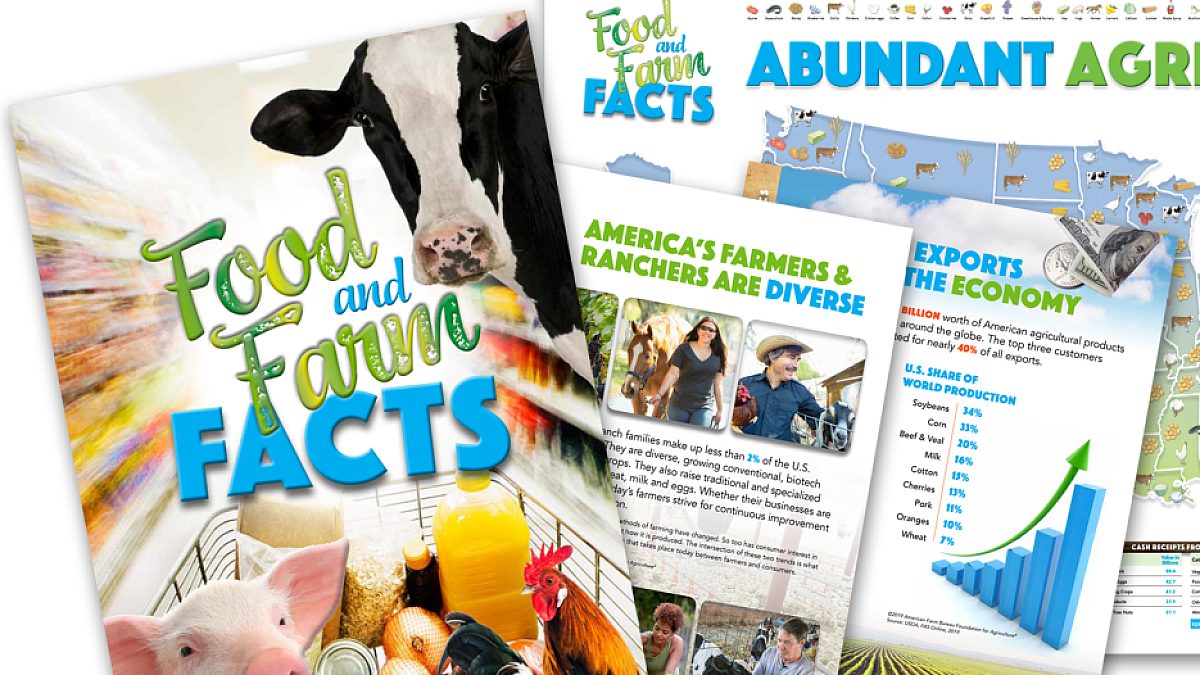Get the Facts About Food and Agriculture
TOPICS
Food and Farm FactsZippy Duvall
President

photo credit: AFBF
Zippy Duvall
President
On one of my flights earlier this year, I sat next to a lady who wanted to have a conversation. She asked me what I do, so I told her I’m president of the American Farm Bureau, the nation’s largest general farm organization. She then asked me if I was a farmer, and I said, “Yes, I raise cattle, hay and chickens.” Then, she asked, “Are you one of those factory farmers?”
There it is—that question based on a lack of understanding at best or a bias against modern agriculture at worst.
The new “Food and Farm Facts” helps us feed the growing interest in food and agriculture with accurate information about the amazing productivity, sustainability and diversity of today’s agriculture.
But instead of letting the question irritate me, I took it as an opportunity to help her understand why that term, factory farm, isn’t accurate or fair to today’s farmers and ranchers.
I was able to share that 98% of farms are owned by individuals, family partnerships or family corporations, and 87% of U.S. ag products sold are produced on family farms or ranches.
I had that fact at the ready because of “Food and Farm Facts,” a book printed by the American Farm Bureau Foundation for Agriculture to answer questions such as, “Where does our food come from, and who grows it?”
Agriculture touches all of us every day, whether it’s through the food on our plates, the wood in our homes, the flowers around our front door, the cotton in our towels and clothes, the fuel in our cars and even some of the proteins in our pharmaceuticals. So it’s natural that people want to know more about how those things are produced.
Farmers and ranchers wish more people understood the many ways in which agriculture makes our lives better. But we’re doing more than wishing! The “Food and Farm Facts” book, map and teaching guides are great tools that help us inform people that agriculture is amazing and amazingly diverse.
Did you know that farm and ranch families are just 2% of the U.S. population, but that 2% grows all the agricultural products we need? Did you know that one U.S. farm can produce enough food, fiber and other farm products for 166 people annually? Or that advanced conservation practices are used on more than half the farmland in production today? Farmers and ranchers have a great story to tell, and “Food and Farm Facts” helps them tell it.
New in this year’s update of the booklet is information about how all of us can help reduce food waste. Farmers and ranchers want to see what they grow get eaten. No one wants to see what they’ve worked, for the better part of a year, to produce get thrown into the trash.
One of my favorite parts of “Food and Farm Facts” is the “Abundant Agriculture” map, showing the primary agricultural products in each state. There’s also a pocket guide for anyone who wants to have ag facts handy for conversations that pop up like the one I had on the airplane.
For teachers and other educators, there are lesson plans and other resources available on the Foundation’s website. These resources are tied to education standards, so teachers can fulfill requirements from reading comprehension and social studies to science and math by teaching about agriculture.
With the new “Food and Farm Facts” available, I hope you will look for ways to get the information out. Help spread the word on social media with shareable graphics and tweets. You can access graphics like this one on the affordability of food in the U.S. You can even download highlights to post and let your contacts know where to find more. Not only does this help us spread great information about agriculture, but it also lets people know that the American Farm Bureau Foundation is working for farmers and ranchers by producing these and other great ag literacy resources.
The new “Food and Farm Facts” helps us feed the growing interest in food and agriculture with accurate information about the amazing productivity, sustainability and diversity of today’s agriculture. If you’re not already a supporter of our Foundation, I hope you’ll consider making a contribution and ordering materials for educators or families in your community. With your help, more students and their families can get the facts about food and agriculture.
Zippy Duvall
President
Vincent “Zippy” Duvall, a poultry, cattle and hay producer from Greene County, Georgia, is the 12th president of the American Farm Bureau Federation.
Top Issues
VIEW ALL